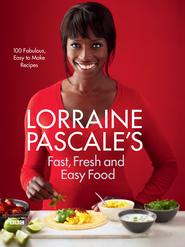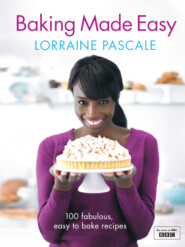По всем вопросам обращайтесь на: info@litportal.ru
(©) 2003-2024.
✖
Home Cooking Made Easy
Настройки чтения
Размер шрифта
Высота строк
Поля
Pinch of soft light brown sugar
1 tbsp soy sauce
Juice of ½ lime
3–4 tbsp rice wine vinegar or mirin
1–2 tbsp water
Equipment
12 wooden kebab sticks cut so they can fit inside your biggest frying pan. Soak them in cold water for 30 minutes before using to prevent burning
Take a chicken breast and, using a pair of scissors and with the pointy end furthest away from you, cut the breasts into about three long thin strips, then set aside and continue with the other three chicken breasts.
Push a kebab stick along the length of a chicken piece, stopping just before the stick comes out the other end. Repeat with the rest of the chicken. Of course, if you don’t feel like threading pieces of chicken on sticks, you can just skip this step and serve them as strips instead.
Heat some oil in a large sauté pan or frying pan, add the chicken and cook well on each side until the chicken is completely cooked. Depending on the thickness of the breast pieces, this will take about 8 minutes. My pan is not big enough to do all the chicken in one go, so I usually put about 1½ breasts’ worth in at a time, then set them aside to cook the rest.
While the chicken is cooking, put all of the sauce ingredients into a blender and blitz to a rough consistency. Taste the sauce to see if you need to add any seasoning or perhaps a squeeze more lime juice, then set aside.
Once the chicken is almost cooked through, add a little honey to the pan and mix the chicken around in it until coated, then remove from the pan. If cooking the chicken in batches, leave the pan to cool a little, then wipe or rinse out the honey before adding the next batch, as it will burn if left in the pan. Add a little more oil and repeat with each batch.
Serve three satay sticks per person sprinkled with some coriander leaves and accompanied by the peanut sauce.
Breads
I have tried to make it my goal these days to bake a fresh hand-made loaf at least once a week. It is hard to beat the smell that meanders around the house as bread bakes in the oven. The first bread I ever made was at secondary school during my much loved Home Economics classes. They were little white bread rolls shaped into small bundles of deliciousness. Since then I have experimented with many different breads, some of which can be found in this chapter – such as old-fashioned English muffins, best served hot with loads of butter, the stunning pain d'epi, which often gets oooos and ahhs when brought to the table, and the divine ham, cheese and chive bread, which is ready from start to finish in under an hour.
‘Enthusiasm is the yeast that raises the dough.’
Paul J. Meyer
Sea salt & olive oil pain d’epi
The way of shaping this loaf transforms an ordinary baguette into quite a stunner. Place the loaf at the centre of the table so everyone can break off a big hunk. Although there is olive oil in the recipe, I like to serve a little extra oil with a drizzle of balsamic, but it goes really well with butter too. As with most bread, this is best served warm.
Makes 1 loaf (V)
275g strong white flour, plus extra for dusting and sprinkling
1 scant tsp sea salt, plus extra for the top
2 tsp fast-action dried yeast
150–185ml warm water
1 tbsp extra-virgin olive oil
Put the flour, 1 teaspoon of salt and the yeast in a large bowl. Add enough of the water to make a lovely soft dough and then the olive oil and mix with a wooden spoon until the mixture begins to come together a little. Put the spoon down and get your hands in, and squidge it together to form a ball. Knead the dough for 10 minutes if doing by hand, or for 5 minutes if using a machine.
Dust a large baking tray with flour, form the dough into a tight ball so that the top is really nice and taut, then roll it into a long and thin baguette shape (thinner than usual, as it will expand while it rises). Cover the tray with oiled clingfilm so it is airtight but not too taut, giving the dough room to expand. Leave it in a warm place for about 1 hour, or until doubled in size. I usually leave mine on a chair near the oven.
Preheat the oven to 200°C (400°F), Gas Mark 6. Once the bread has almost doubled in size, remove the clingfilm and sprinkle over some flour. Put the bread with the shortest edge facing you (or lengthways) and, starting at the end furthest away from you, hold a pair of scissors so they are parallel to the bread, then tilt them so they are at a 45-degree angle. Make a large cut 10cm away from the top of the dough, almost as if you were going to snip that bit off (but it will be attached still), then take that piece and move it to the left. Make another snip about 10cm down from the bottom of the last one and move that piece to the right. Keep on doing this until you reach the end of the bread.
Sprinkle the top with flour and sea salt. Spray some water into the oven to create a steamy atmosphere. I usually spray 8–10 squirts with a spray gun, then place the dough in the oven. Bake for about 25 minutes, or until the bread is cooked. It should smell cooked, be golden brown and sound hollow when you tap it on the bottom.
Twenty-first century ham, cheese & chive bread
On weekends I love to spend hours in the kitchen preparing fresh breads, hearty meat dishes and lots of puddings. I especially love the taste of freshly baked bread! I find that during the week, however, sometimes there just aren’t enough hours in the day for baking, so I dreamed up this very tasty little number, which is made from start to finish in under an hour – the perfect 21st-century bread.
Makes 1 loaf
425g self-raising flour
1 tsp baking powder
½ tsp salt
150g mature Cheddar cheese, grated, plus an extra 10g grated cheese, for sprinkling
½ bunch of fresh chives, finely chopped
Few twists of black pepper
1 tsp paprika (optional)
1 tsp mustard powder (optional)
6 slices of honey roast ham, ripped up into little bits
200–225ml water
Preheat the oven to 200°C (400°F), Gas Mark 6. Put all of the ingredients in a bowl except the water and the 10g of grated cheese and mix together well. Add enough water to make a soft but not sticky dough. I usually add 200ml, stir it briefly and then get my hands in and squidge it together, adding more water if necessary. Remove the dough from the bowl and shape it into a ball, flatten the ball slightly, so it cooks more quickly, then slash the loaf three times vertically with a sharp knife. Sprinkle over the remaining grated cheese.
Spray some water into the oven to create a steamy atmosphere. I usually spray 8–10 squirts with a spray gun, then place the dough on a baking tray and bake for 35–45 minutes, or until the bread is golden brown and smells cooked.
Once cooked, remove from the oven and leave to cool a little bit (although I find this quite hard to do!). I love this bread served with lots of butter and a steaming hot bowl of soup.
Old-fashioned English muffins
These beautiful little specimens are truly hard to beat when it comes to the ultimate comfort food.
Makes 8–10 muffins (V)
575g strong white bread flour
1 tsp salt







